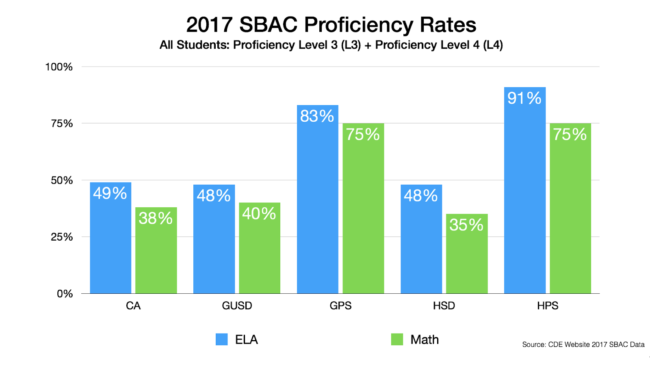12.07.17Theme and Variation: How Navigator Schools Build a School-wide Culture of Teaching

Navigator Schools is a small network of two high performing schools in California: Gilroy Prep in Gilroy and Hollister Prep in Hollister. Their results have been tremendous and yesterday I stumbled on a training video they’d made that I thought was fantastic.
Not only that—I thought it provided a critical insight into how to train teachers and build culture around TLAC techniques—and any other approaches to teaching.
After watching it I spoke briefly with Heather Parsons, principal at Hollister Prep, so I get to have the pleasure of sharing her insights as well.
First, here’s the video:
As you can see its topic is the TLAC technique Turn and Talk. This is one of many such videos Navigator Schools have produced.
“I am like the principal paparazzi, toting my video camera with me everywhere I go,” Parsons said. “The videos are used for our coaching & feedback meetings but I also pull out clips of TLAC techniques to create exemplar videos. We show the exemplars in our morning huddles to “Shout-Out” best practices. During school walk throughs, we also identify techniques that need a reset and make it a school-wide focus for that week.”
It’s an incredibly positive way to develop people but what I love most about it is something unspoken but critically important about the video. It shows Theme and Variation.
There are six examples in the video. The message is “This is something we all do here. It’s part of our culture.”
And there are certain consistencies—themes—to all of the models.
There’s always in interactive in-cue for example. There’s a really clear expectation about body position and facing your partner to show full engagement.
The message is “We have a way of doing this, certain things we all do in common when using the technique. That’s important. Saying, “That’s how we do it here” is how cultures communicate themselves.
But the video also shows variations.Two kinds in fact.
There are variations in the technique—how teachers respond to specific situations with adaptations (The last teacher uses ‘managed turns’ to designate who goes first; the first teacher combines with white boards).
And most importantly of all there are variations in style—you can see a relatively wide range of individual approaches to personalize and adapt. And this is hugely important. It communicates—‘We have a way of doing things but there is still room for you. You still get to be you when you teach. You can adapt these techniques to match the person you are and want to be in the classroom.”
Compare the first teacher to the the third teacher for example. The first teacher is upbeat, structured, clear, cheery. The third teacher is more easy-going, intellectual. She’s sitting on the desk and asking her question very casually. And they both work; and both are in the exemplar video. There are things we all do in common and there are ways we all adapt these ideas to our individual styles.
This message is my favorite part—interestingly if you’ve ever come to one of our workshops you have hopefully seen this—we always try to show multiple models of a given technique with divergent styles when we can with the idea being that we want people to see consistencies—what does it take to do this well—and differences—how can I make it feel like me. In fact we often ask: ‘What themes and what variations do you see in these clips?’
Anyway, I love that Navigator Schools have made videos of their own internal champions. “This is something we already do and that our kids love” is a powerful message. And so is, “But you can also see that we also all do it differently.”
Heather Parsons struck this theme in our conversation. “The expectations are fairly simple,” she noted. “Make sure you saturate lessons with student discussion. Each teacher has their own unique way of approaching the Turn and Talk, but all of them expect 100% engagement as well as conversation courtesy such as SLANT and TRACK.”
She’s also clear on the purpose for the technique. Knowing the purpose helps teachers adapt and problem solve with the technique. “Keeping students engaged is the primary function of the Turn-and-Talk at Navi,” she said, but it has also led to student ownership of their learning and incredibly high level discussions.”
It’s inspiring to see schools with tremendous results (see below) that achieve success by celebrating the talents of their best people, and that find a way to balance consistency of philosophy and method with respect for teacher individuality.
So… hope you’ll get out there with your video cameras! And I hope you’ll follow Navigator’s lead on “Theme and Variation.”
And here are Navigator’s very impressive results for Gilroy Prep (GPS) and Hollister Prep (HPS) compared to their local districts and the state of California. They’ve done this with high poverty student population and more than 50% English Language Learners.

